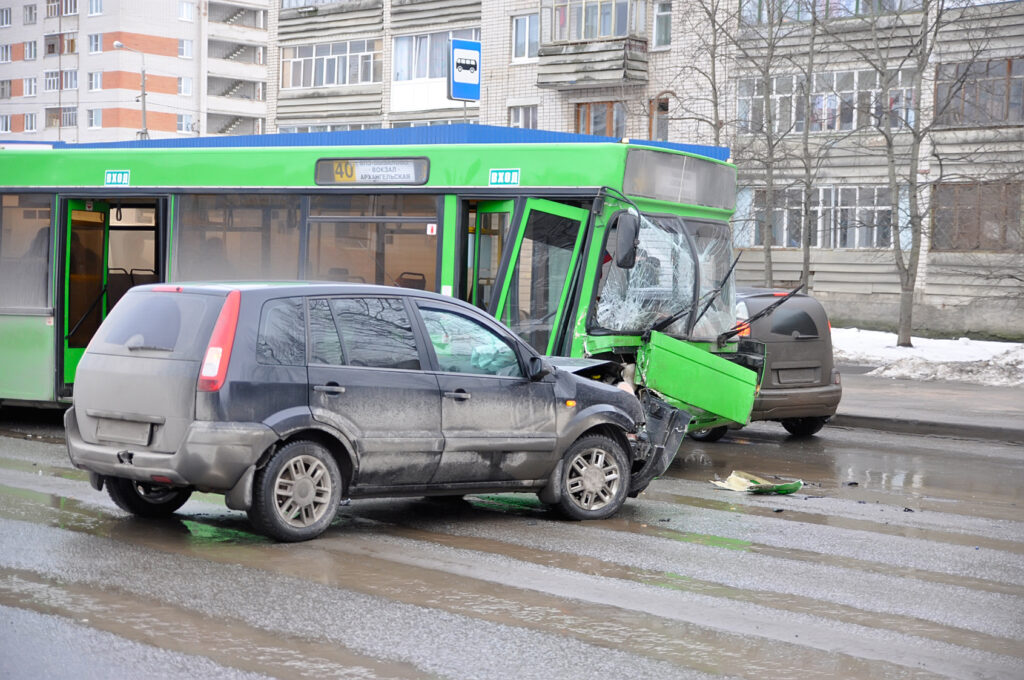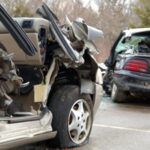Being involved in a traffic accident is a distressing experience, and the consequences can vary significantly depending on the circumstances. When a bus collides with a car, the impact can be severe due to the size and weight disparity between the vehicles. In this article, we will explore the potential outcomes of a bus-car collision, focusing on the immediate aftermath, injuries, legal implications, and ways to stay safe on the road.
-
Contents
The Immediate Aftermath:
When a bus hits a car, the initial moments can be chaotic. The force of the impact can cause significant damage to the vehicle, leaving occupants shaken and disoriented. It is crucial to remain calm and prioritize safety. If possible, move your car to a safe location away from traffic, turn on hazard lights, and contact emergency services. Exchange information with the bus driver, including their license plate number, insurance details, and the name of the bus company. These steps will help facilitate the post-accident process.
-
Potential Injuries:
Bus-car collisions have the potential to cause severe injuries due to the vast difference in size and weight between the vehicles involved. Occupants of the car may sustain various injuries, including whiplash, broken bones, head trauma, spinal cord damage, internal bleeding, or even fatalities in extreme cases. Passengers on the bus are also at risk of injuries, particularly if they are not properly restrained or if the bus lacks safety features like seat belts. The severity of the injuries depends on factors such as the speed of the vehicles, the angle of impact, and the safety measures implemented by both drivers.
-
Legal Implications:
Determining liability in a bus-car collision can be a complex process. In most cases, the driver at fault, regardless of the vehicle type, will be held responsible for the damages. It is essential to gather evidence at the accident scene, including photographs, witness statements, and any available surveillance footage. This evidence can help establish the sequence of events and prove negligence. If you believe the bus driver was at fault, consult with an experienced bus accident lawyer who can guide you through the legal proceedings and protect your rights.
-
Insurance Coverage:
Having appropriate insurance coverage is crucial in the event of a bus-car collision. Typically, the at-fault driver’s insurance should cover the damages and medical expenses. However, bus accidents may involve multiple parties, such as the bus company, the driver’s employer, or a government entity if it is a public transportation bus. The legal and insurance aspects can be intricate, and it is advisable to consult with an attorney or insurance professional to ensure you understand your rights and the available coverage.
-
Seeking Medical Attention:
Even if you feel relatively unharmed immediately following the accident, it is crucial to seek medical attention as soon as possible. Some injuries may not manifest symptoms right away, and a medical professional can evaluate your condition thoroughly. Prompt medical attention not only ensures your well-being but also creates a medical record of your injuries, which can be crucial for insurance claims or legal proceedings later on.
-
Preventive Measures:
When it comes to road safety, being proactive is key. Buses are large vehicles that require extra caution from all drivers on the road. By following preventive measures and adopting defensive driving habits, you can significantly reduce the risk of a bus hitting your car. In this article, we will explore some essential preventive measures to help you stay safe and avoid accidents involving buses.
-
Stay Alert and Be Aware:
One of the most crucial preventive measures is to stay alert and maintain awareness of your surroundings at all times. Pay attention to road signs, signals, and any special road markings indicating bus lanes or stops. Be particularly vigilant when driving in areas with heavy bus traffic, such as near schools, bus terminals, or busy city streets.
-
Maintain a Safe Distance:
Maintaining a safe following distance is crucial to avoid potential collisions with buses. Keep in mind that buses require more time and distance to stop due to their size and weight. It is recommended to maintain a distance of at least three seconds between your car and the bus in front of you. This will allow you enough time to react and stop safely if the bus suddenly slows down or comes to a halt.
-
Be Cautious around Bus Stops:
Exercise caution when passing or stopping near bus stops. Buses frequently make sudden stops to pick up or drop off passengers, and pedestrians may enter or exit the bus unexpectedly. Slow down and be prepared for these sudden movements. Avoid passing a bus that has stopped to pick up or drop off passengers, as people may be crossing the road in front of or behind the bus.
-
Avoid Blind Spots:
Buses have larger blind spots compared to smaller vehicles, making it crucial to avoid lingering in their blind spot areas. If you cannot see the bus driver’s mirrors, assume that they cannot see you either. When passing a bus, do so quickly and safely, ensuring you have enough clearance. Additionally, be cautious when changing lanes in front of a bus, as their size and weight require more time to decelerate.
-
Signal Your Intentions:
Using your vehicle’s signals is an essential aspect of defensive driving and can help prevent accidents. Signal your intentions early and clearly when changing lanes or making turns. This allows other drivers, including bus drivers, to anticipate your actions and adjust their driving accordingly. Clear communication helps create a safer driving environment for everyone on the road.
-
Avoid Distracted Driving:
Distracted driving is a leading cause of accidents. Avoid engaging in activities that take your attention away from the road, such as texting, talking on the phone, eating, or grooming while driving. Focus on the task at hand: operating your vehicle safely. By eliminating distractions, you can better anticipate potential hazards, including buses, and react promptly.
-
Observe Speed Limits:
Adhering to speed limits is crucial for maintaining control of your vehicle and reacting to sudden situations. Speeding reduces your ability to stop or maneuver quickly, increasing the risk of accidents. Always drive at a safe and appropriate speed, particularly when sharing the road with buses. Observe posted speed limits and adjust your speed to match road and traffic conditions.
-
Regular Vehicle Maintenance:
Proper vehicle maintenance is essential for optimum performance and safety. Regularly check your vehicle’s brakes, tires, lights, and signals to ensure they are functioning correctly. Worn-out brakes or tires can compromise your ability to stop or handle the vehicle effectively, increasing the risk of accidents. Keep your car in good condition to minimize the likelihood of mechanical failures that could lead to collisions.
Preventive measures play a vital role in avoiding accidents involving buses and keeping yourself and others safe on the road. Stay alert, maintain a safe distance, be cautious.






